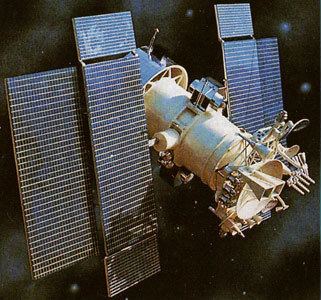Manufacturer NPO PM/Reshetnev Operator RSCC Design life 3 years Launch mass 2,110 kg Bus KAUR | Regime Geostationary Launch mass 2,110 kg | |
 | ||
Similar Ekran, Molniya, Strela, Luch, Prognoz | ||
Gorizont, (Russian: Горизонт, Horizon), GRAU index 11F662, is a series of 35 Russian, previously Soviet, geosynchronous communication satellites launched between 1978 and 2000. The programme was started in order to develop a satellite system to relay coverage of the 1980 Olympic Games from Moscow. The first four satellites were originally launched for this sole purpose. Following this, the Gorizont system was integrated into the YeSSS Unified Satellite Communication System, and used to relay both civilian and military communications. From 1988 onwards, the satellites were also used in support of the Okean programme.
Gorizont satellites are based on the KAUR-3 satellite bus, which provides three-axis stabilisation, and liquid manoeuvring engines.
The series was replaced by the Ekspress series.
Broadcast use
Following the 1980 Olympics some of the surplus C Band capacity on the satellites was used to distribute Soviet Television both to relay transmitters within the USSR (where the vast physical size of the country made conventional distribution to remote areas difficult) and to other Eastern Bloc and allied countries for relay to Soviet troops stationed there. Later programming from other Warsaw Pact countries and Cuba were added. Signals from these satellites spread well outside their intended area and were for a time were popular with early domestic satellite television enthusiasts in Western Europe as these were among the first such signals to be receivable there. In this application Gorizont was (except at high latitudes) the successor to the Orbita system which used non-geostationary Molniya satellites. Gorizont represented an improvement in channel capacity and could be picked up on less elaborate receiving systems.
